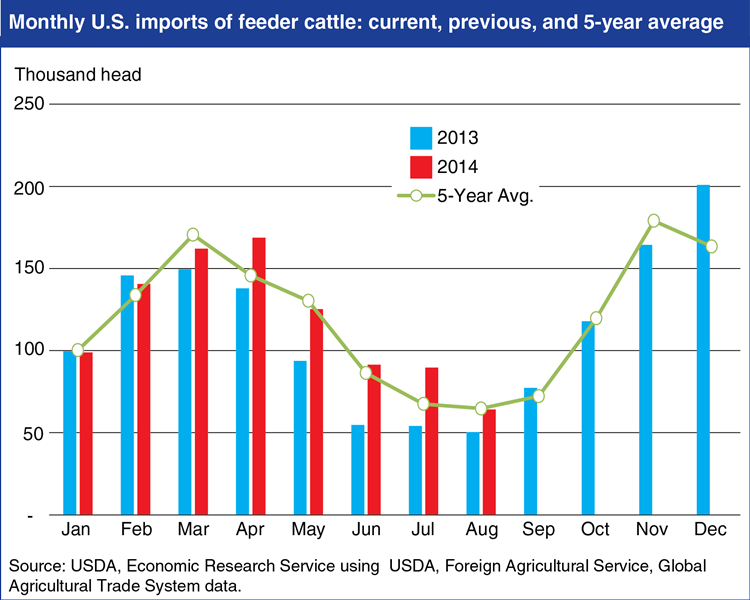U.S. Cattle Imports on the Rise as Farmers Rebuild Inventories

U.S. cattle imports have increased from both Canada and Mexico in 2014, totaling 1.413 million head through August.
Imports are up 14 percent from Mexico and 12 percent from Canada due to stronger U.S. demand for feeder cattle.
U.S producers are seeking to rebuild animal inventories reduced by several years of dry weather and take advantage of the low U.S. feed prices stemming from record 2014 U.S. corn and soybean harvests.
U.S. feeder cattle demand is reflected in the sharp increase in the average price for Nebraska feeder steers (7-8 hundredweight [cwt]) from $149.45/cwt during the first three quarters of 2013 to $205.57/cwt during the same period of 2014. 
Imports over the summer months, typically the slowest season, were well above last year’s levels, and there are indications that increased shipments continued into September 2014. U.S. cattle imports are now forecast at 2.200 million head in 2014 and 2.225 million head in 2015. Although both Canada and Mexico have relatively low cattle inventories, strong U.S. prices are expected to continue to pull cattle across the border.
Find this chart and additional analysis in Livestock, Dairy, and Poultry Outlook: October 2014.
Source: USDA Economic Research Service







